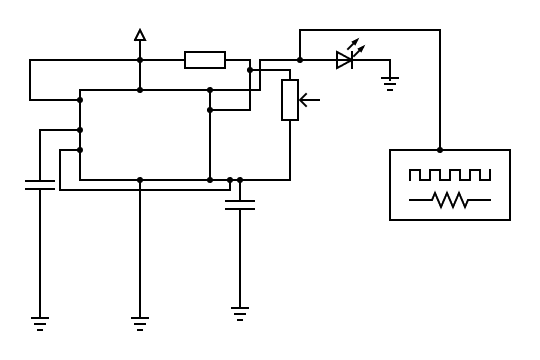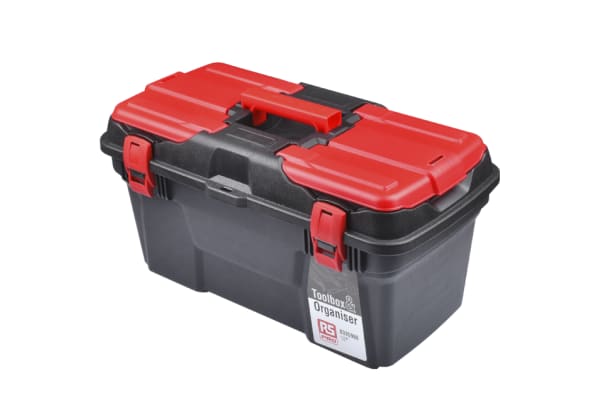- Published 13 Nov 2023
- Last Modified 13 Nov 2023
- 6 min
What is a Stroboscope?
RS stroboscope instruments appear to freeze high-speed objects as they operate, allowing you to inspect them without downtime. Learn the concepts behind this effect and the industrial maintenance advantages it brings.

Reviewed by Peter Kendall, Technical Support Engineer (August 2023)

A stroboscope is basically a flickering light with controls for how fast it flickers. While modern stroboscope instruments do this using an electrical circuit to control either a Xenon light or a light-emitting diode (LED), the earliest stroboscopes were mechanical devices that repeatedly blocked light, such as a piece of paper with cut-outs in an even pattern. These were instrumental in motion picture development.
Strobe lights have recreational uses, like dance clubs, concerts, and sporting events. However, stroboscope instruments control the stroboscope flash more precisely to achieve useful industrial benefits - chiefly, to make a moving object appear frozen still, allowing you to inspect it as it operates.
How Does a Stroboscope Work?
Stroboscopes take advantage of a quirk in how human eyes take in light. With every stroboscope flash, a moving object becomes brightly lit, and the eyes (and mind) merge these lit instances into a constantly lit appearance.
If the light flickers at the same rate that an object spins or strokes, the light will always ‘catch’ the object in the same position. This makes the object appear to ‘freeze’ in place, allowing you to inspect it.
If the light flickers at, say, four times the speed of a rotating object, it will produce the illusion of four merged evenly spaced images of the object. This is because the stroboscope light keeps catching the object at its 12, 3, 6, and 9 o’clock positions, and we thus see all 4 at once.
Stroboscope Circuit Diagram
Here is an example of a stroboscope circuit diagram for producing a strobe effect in light I1, a Xenon light. This uses AC mains power, converted to DC power with diode D1.
This system continuously stores large amounts of energy and releases it quickly in pulses through I1.
Resistors R1 and R2 charge capacitors C1 and C2, respectively. C2’s voltage rises as it charges. Current travels through Zener diode ZD1 at a certain voltage to send current through rectifier SCR1. This triggers C2 to discharge through pulse transformer T1, activating the Xenon gas of I1 to conduct electricity. This draws all of C1’s charge and makes the light burn brightly.
T1 can transmit pulses of thousands of volts in a short timeframe. Each of these pulses is one of these cycles, producing the strobing effect.

What is a Stroboscope Used for?
When something moves in a constant, reliable cycle, this is called oscillating. Oscillating includes both spinning in a circle and stroking back and forth. Any device doing this can be inspected with a stroboscope, making them extremely versatile instruments.
Industrial machinery is where stroboscopes shine the brightest, especially in factories. Spinning shafts and fans are often cumbersome to remove, and their removal means downtime. With stroboscope instruments, you can inspect equipment without interrupting operation and do proactive maintenance, finding problems before they become worse and planning downtime on your own terms. With belt-style printing presses, a stroboscope can freeze the entire produced image for a quick inspection, stopping the presses with ease!
Machines stroking vertically can similarly be inspected with stroboscope light. These range from home sewing machines to industrial devices punching holes through metal.
Stroboscopes aren’t limited to making objects appear frozen. By setting the light frequency slightly slower than the object’s, you can effectively view it in slow motion to study how it operates, not just its static condition. Setting the light frequency slightly faster than the object’s will make it appear to be moving backwards. With this ability at your fingertips, you can observe how an audio speaker pulses or a marine propeller churns, for example.
Built-In Laser Tachometers
Stroboscope instruments are also available with built-in laser tachometers. A tachometer measures an object’s speed in RPM, or more broadly, its oscillation in Hz. This also includes stroking objects.
Tachometers usually rely on a strip of reflective tape installed on the object so the laser can reflect a reading back to the instrument. This illustrates the advantage of stroboscopes. They can work on an installation as-is without needing to pause operation, access it, and install something else. But tachometers provide an RPM reading right away, without the back-and-forth adjustments needed with stroboscopes to find the frequency where the object ‘freezes’.
Using an RS dual-function stroboscope-tachometer, you can quickly find the object’s frequency by laser and then inspect it by LED, all while it spins and functions. We also carry dedicated tachometers among our speed test and measurement products.
Stroboscope LED
We stock two options for the type of stroboscope light: LED and Xenon. While LEDs tend not to be as bright as Xenon lights, they last longer, use less energy, and produce less heat.
An LED is also an excellent choice for a stroboscope light because it cleanly turns the light on and off in time with its power source.
Incandescent lights (from standard filament light bulbs) aren’t practical for this effect. They technically strobe in everyday use when supplied by AC mains power, oscillating at 50 Hz. However, the delay of the cooling filament makes the light ‘linger’ during brief deactivated periods, making the strobing effect negligible. Fluorescent home lighting does this too, to an extent.
An LED, on the other hand, will dutifully cut off its light when its power is lost, no matter how often, which is why they are available in our stroboscopes.
How to Use a Stroboscope
First, be aware of the health risks of stroboscope lights. People with photosensitive epilepsy may experience discomfort or seizures from the stroboscope’s flashing lights.
Once you’ve lit, say, a rotating object you want to study, simply adjust the stroboscope flash rate until you find the sweet spot where the object appears stationary. If you see multiple orientations of the object frozen at once as you decrease the flash rate, you’ve found a multiple of the true speed. Keep decreasing the flash rate until you see only one image. The flash rate in Hz at this point equals the object’s speed in RPM.
At this point, if you slightly decrease the flash rate, the object will appear to move in slow motion in its true direction. Slightly increasing the rate will move the image backwards.
If you need to mount the stroboscope in place, RS stroboscope accessories include tripods and mounting kits, along with extension cables, spare LEDs, and standalone stroboscope controllers, which can be connected to external LEDs.


